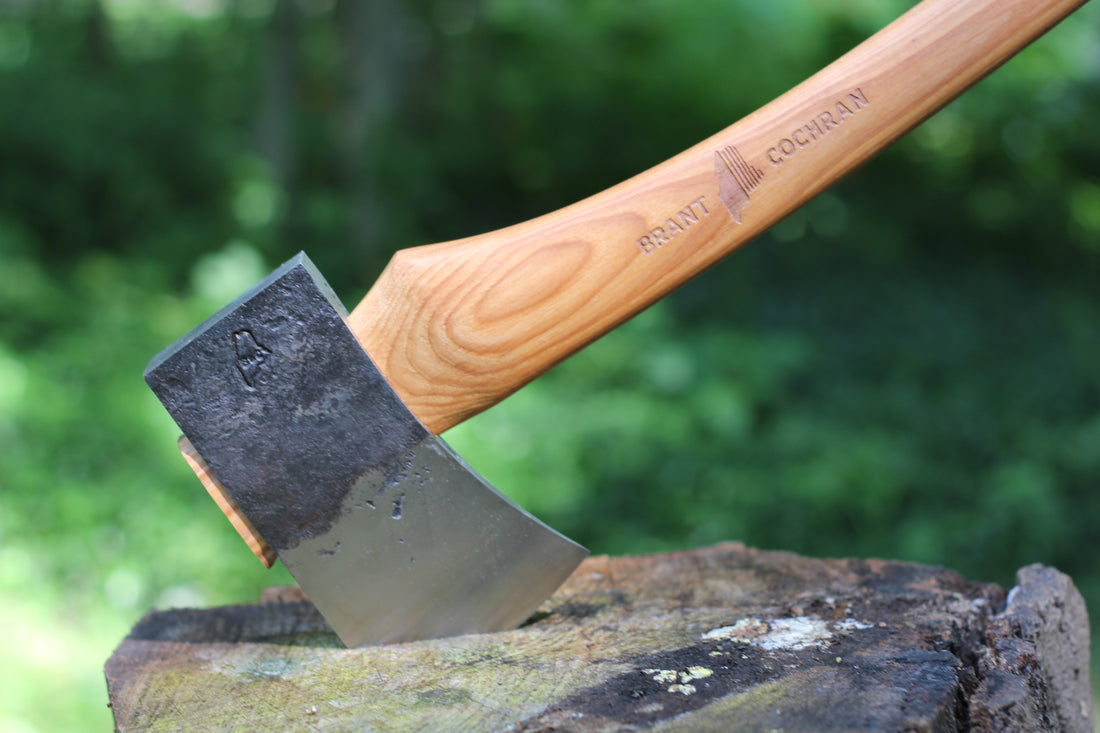We are frequently asked what makes a Brant & Cochran axe so much better than one you buy at a big box hardware store. Is the extra money worth it? Of course, we are partial to our own Maine-forged axes (Field & Stream Magazine recognized them as one of the four best in the world), but there are other high quality axe makers out there.
So what makes for a good axe?
-
Steel. Seems obvious, right? Ask what type it is and where it's from. We use U.S. made 1050 medium carbon steel in our Maine wedge axes. It comes from steel mills in Western New York and South Carolina. "1050" means that it is composed of .5% carbon, some other trace metals and around 99% iron. Other quality axes are made from 5150 carbon steel. These steels when heat treated properly will keep an edge and maintain a balance between strength and durability. The steel in mass produced axes is low quality made out of who knows what. Melted down washing machines?

- Hardness/Heat Treating. Brant & Cochran axes are heat treated to a Rockwell Hardness of 56-58. This makes them hard enough to keep an edge, but not brittle so that they are susceptible to chipping. One common complaint about cheap axes is that they do not keep an edge. This means they need to be constantly sharpened. This is imperative as a dull axe is a dangerous axe. We always say, "If you like to sharpen axes then by all means buy a cheap axe. You'll be sharpening it more than using it!"
-
Handle. Cheap axes = cheap handles. And cheap handles can be dangerous. An "A" grade handle, like those we use for Brant & Cochran axes, are straight, have good near vertical grain orientation, and do not have any checks (small cracks along the grain) or knots in them.
 A good handle is important. Anything less and your handle could break and the axe head "fly off the handle." Take a deep dive on handles in our blog "Get A Handle On It."
A good handle is important. Anything less and your handle could break and the axe head "fly off the handle." Take a deep dive on handles in our blog "Get A Handle On It."
-
Axe Geometry. At Brant & Cochran we take a lot of time making sure that our axes line up in two ways: that the middle of the poll of the axe (the top) lines up with the cutting edge and that the center of the handle lines up straight into the eye of the axe head and the center of the poll. Hold a big box store axe out in front of you and look down the handle. Is it lined up to the center of the axe? Probably not.

- Know Thy Maker. Finally, who made your axe and do they stand behind it (now that I think of it probably the safest place to stand!). We are making heirloom quality axes to be passed down for generations. Any defects in manufacturing or quality are immediately rectified. Can you say that about the no name axe you bought at a big box store?
